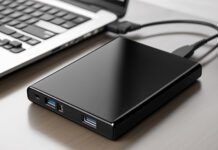Whether or not people regularly attend their churches, some three-quarters of Americans identify as religious, and there are hundreds of thousands of churches, synagogues and mosques in the country, all of which need electricity for lights, HVAC and charging the pastors’ electronic gadgets, among other things. So it’s no surprise that more and more churches are turning to solar power to keep the lights on and protect God’s/Allah’s/The Flying Spaghetti Monster’s green earth.
WHY DO CHURCHES WANT TO GO SOLAR?
There are as many reasons for churches to go solar as there are for ordinary people, but churches and other faith-based organizations tend to be motivated by a couple of reasons:
PROTECTING CREATION
First, and most obvious, is that leaders of many churches feel they have a spiritual obligation to preserve the environment. GreenFaith, an interfaith organization dedicated to environmental leadership, writes as part of their mission statement: “Protecting the earth is a religious value, and environmental stewardship is a moral responsibility.” They go on to say “religious traditions see the sacred in nature, and people grow spiritually through a strong relationship with the earth.”
Discussion of the spirituality of environmental stewardship can be found in many places in the religious world. There’s even a renewable energy company called Interfaith Power & Light that holds, as their mission, “to be faithful stewards of Creation by responding to global warming through the promotion of energy conservation, energy efficiency and renewable energy.”
Wondering how much do solar panels add to home value? Visit solar-power-information.net to find out.
PROTECTING THE COFFERS
Simply put, running a church costs money, and more and more churches are putting their often large and shade-free roofs to good use by installing solar panels, which can reduce their electric bills and even turn into a source of profit. After all, an investment in solar offers financial returns of over 10 percent on average in the U.S. right now, and churches could use some solid financial footing so they can focus on the flock instead of the fiscal outlook.
But there are complications there, too. Because churches are classified as nonprofit entities, they can’t take advantage of solar incentives like state and federal tax credits. So they often have to turn to their congregants to find creative solutions to the problems that arise. That’s where the fun starts!
By installing solar panels with the help of installers in Trenton City, you can reduce your own personal environmental footprint. When you put a solar panel system on your property, you can avoid purchasing carbon-emitting electricity from the grid, pulling directly from your solar panels instead.
HOW CAN CHURCHES GO SOLAR?
Like we said above, churches are nonprofit entities, so they can’t take advantage of the tax breaks that exist to make solar cheaper for individuals and businesses. That means the upfront cost of solar is higher, and it’s often not economically viable to pay out of pocket.
Most churches rely on contributions from their members, too, and using those contributions to add panels to the roof can bring the cost to the institution down considerably. Still, this may not be the best route from a financial standpoint. If you’re a church leader thinking about solar for your building, you’ll want to be sure you’re getting the most for your congregants’ hard-earned money.
CONSIDER THE FOLLOWING OPTIONS:
- Taking contributions and paying up front for solar
- Signing a Power-Purchase Agreement with an established solar company
- Having congregants band together to form an LLC that can take advantage of tax breaks
OPTION 1: CONTRIBUTIONS
If your congregation is into tithing, and you can get a good deal from a local solar company (around $3 per watt installed is good), this can be a great way to keep things simple. After the purchase, your church will own a rooftop solar system, and accrue all the future financial benefits thereof.
Here’s how the return-on-investment for that installation looks:

That’s not too bad, as payback goes. You’re looking at a first-year cost (the big negative bar in 2016) of about $27,500 — that’s the $30,000 initial investment for a 10-kW solar panel installation minus one year’s worth of energy savings. As time goes by, the energy savings pile up, paying the cost of the system back after year 15. After that, the panels are under warranty to keep making electricity until year 25 (where our estimates end), but could continue to operate for years after.












